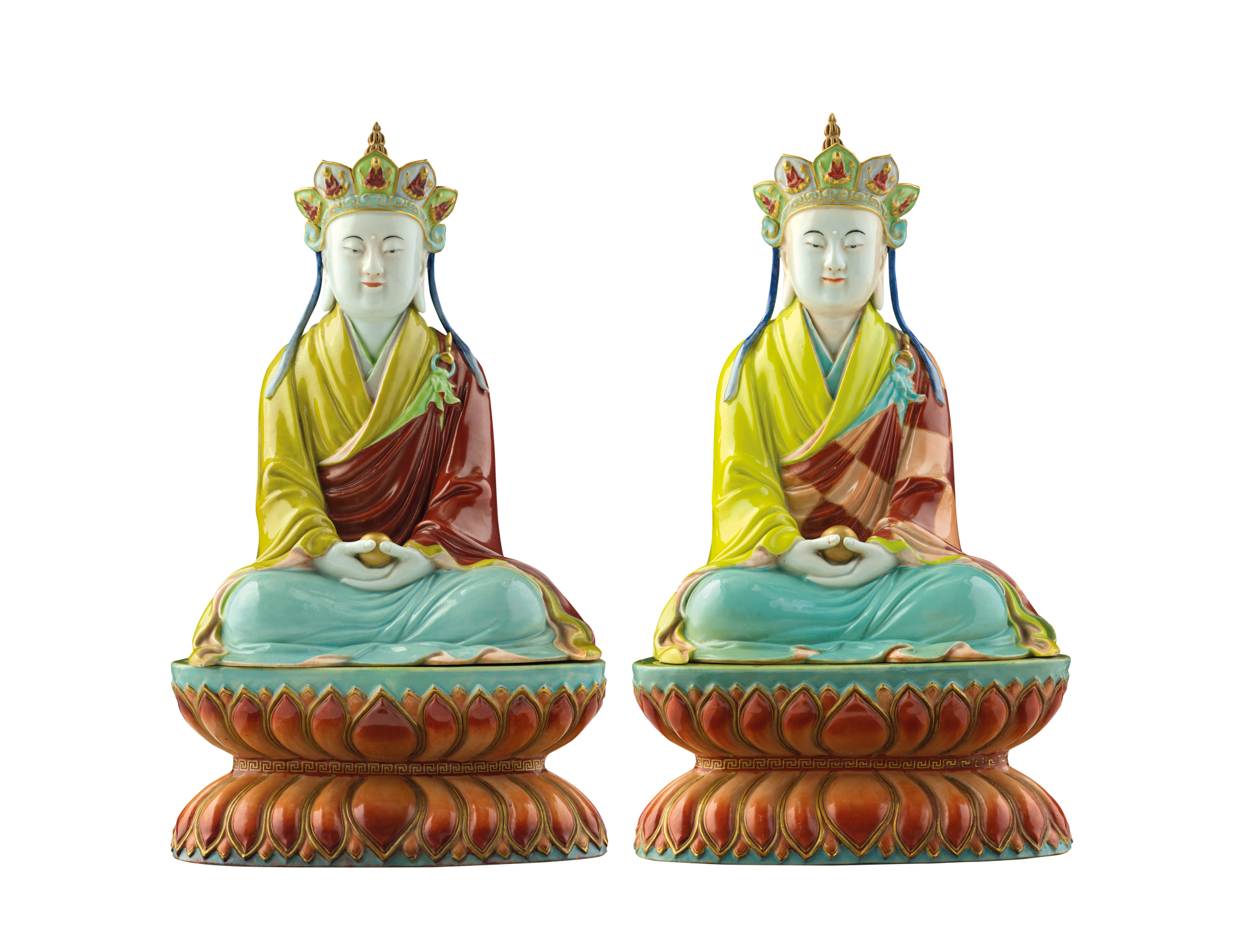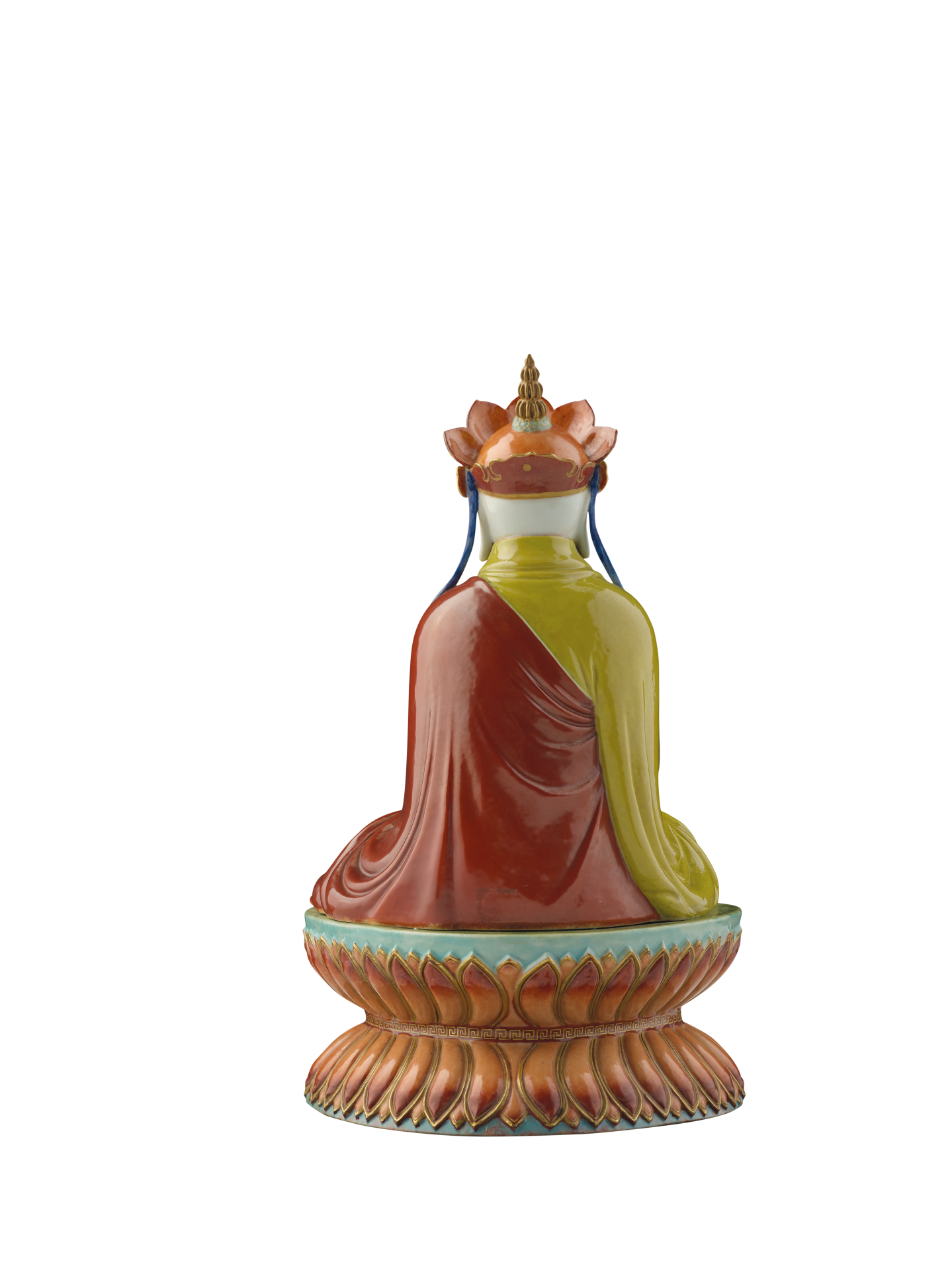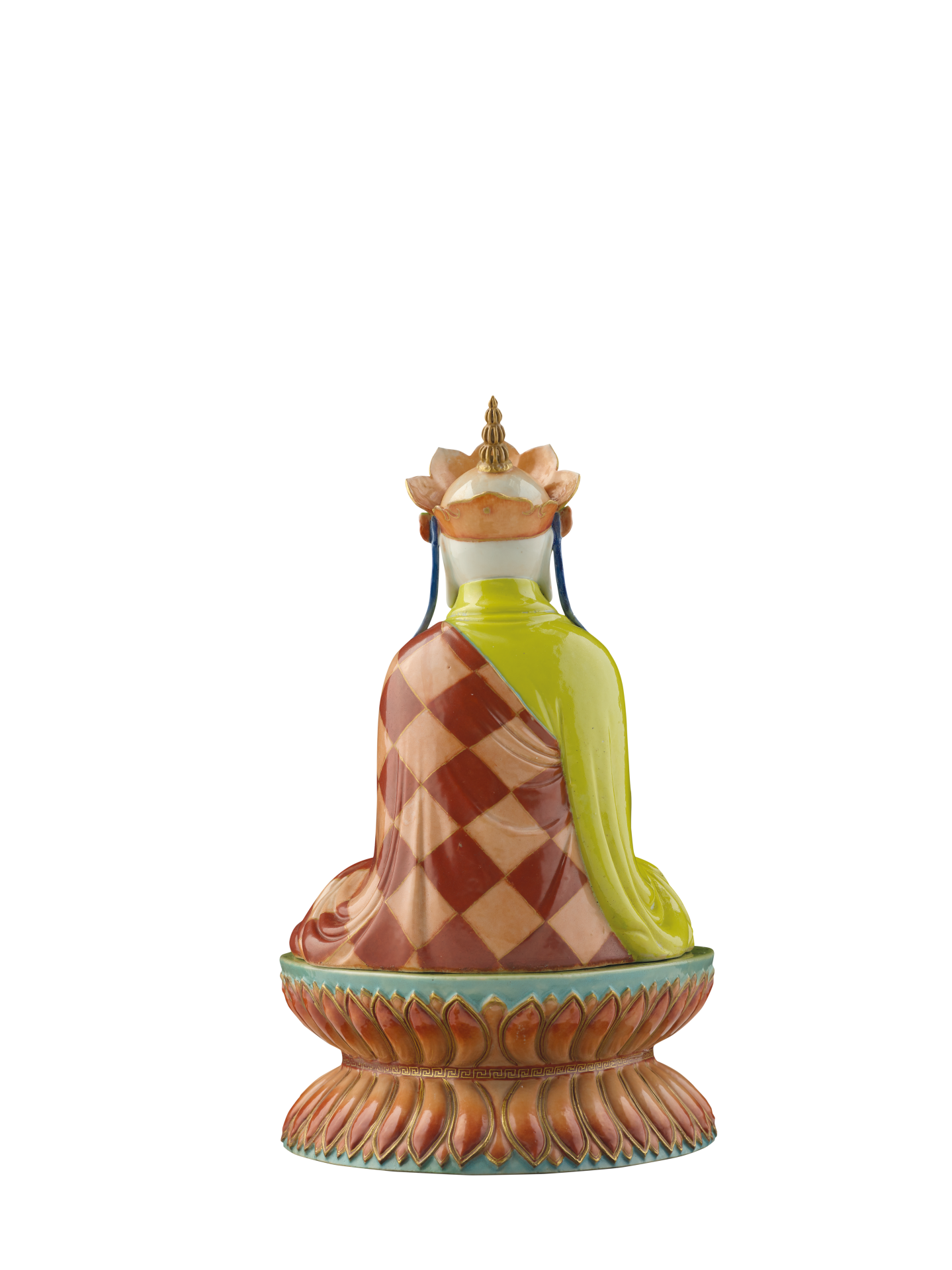Pair of Seated Kṣitigarbha Bodhisattva
Kṣitigarbha, along with Avalokiteśvara (Guanyin), Mañjuśrī and Samantabhadra are known as the Four Great Bodhisattvas. They enjoy very important status in Chinese Buddhism. Aeons ago, Kṣitigarbha vowed “to achieve Enlightenment only after the salvation of all sentient beings has been accomplished; not to achieve Buddhahood until all hells are emptied”. Thus, he is also known as “Bodhisattva Kṣitigarbha of the Great Vow”.
This pair of famille rose porcelain statues of Kṣitigarbha are identical in pose and appearance except slight variations in the colour of their clothing. Each statue appears as a Hearer-monk (śrāvaka bhikṣu) wearing a five-lotus-petal crown; each petal featuring a Amitābha Buddha clothed in red kāṣāya and with hands in ‘meditation gesture’. Both have an oval face, plump cheeks, an ūrṇā between the crescent-moon eyebrows, long narrow eyes, thin ruddy lips, and sloping round shoulders. They wear a cross-collared robe under a kāṣāya anchored at the left front with a ring. The drapery appears soft and fluid. The hands are in ‘meditation gesture’, with a golden jewel resting on the palms. Both are seated with legs locked in ‘lotus posture’ (padmāsana) on a waisted pedestal in the form of a full-blown lotus with half of the petals facing upward and the other half facing downward. The pedestal is lavishly decorated; with lotus pods incised on the pastel green top surface, a gilt key-fret band encircling the waist, as well as gilt ridges highlighting the outlines of all lotus petals.
Famille rose refers to a group of imperial porcelain decorated with a palette of soft, opaque overglaze enamel first produced during the latter years of the Kangxi reign (1662-1722), and reaching its golden period during the Qianlong reign (1746-1796) of the Qing dynasty (1636-1912). These two Kṣitigarbha statues are noted for their fresh and elegant palette, richly gradated hues, smooth surface and highly vitreous glaze. They are excellent examples of the painted porcelains of the Qing dynasty.


